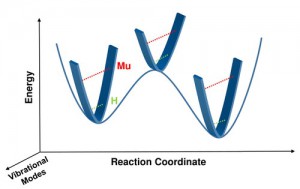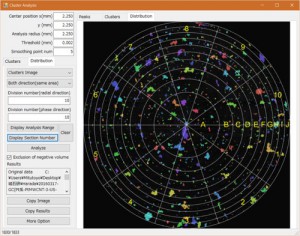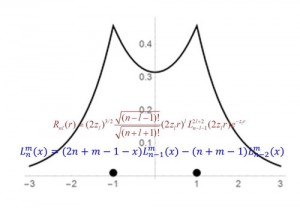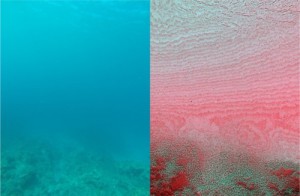[Advanced Published online Journal of Computer Chemistry, Japan, by J-STAGE]
<Title:> ミュオニウム化学反応の新展開
<Author(s):> 高柳 敏幸, 吉田 崇彦
<Corresponding author E-Mill:> tako(at)mail.saitama-u.ac.jp
<Abstract:> 正または負電荷を有するミューオン粒子を用いて,ミュオニウム(0.114 amu) およびミュオニックヘリウム(4.11 amu)と呼ばれる水素原子の同位体をつくりだすことができる.これを利用することによって,H/D/Tを超えた質量比の同位体効果を観測することができ る.ミュオニウムはその小さな質量のため,化学反応系の水素原子がミュオニウムに置換されると,ゼロ点振動エネルギーやトンネル効果による大きな 量子効果を示す.また,反応経路そのものが変化する例や,遷移状態が安定化する特異な現象も存在する.
<Keywords:> Muon, Muonium, Muonic helium, Isotope effect, Nuclear quantum effect, Vibrational bonding
<URL:> https://www.jstage.jst.go.jp/article/jccj/advpub/0/advpub_2016-0006/_article/-char/ja/
<Title:> ミュオニウム化学反応の新展開
<Author(s):> 高柳 敏幸, 吉田 崇彦
<Corresponding author E-Mill:> tako(at)mail.saitama-u.ac.jp
<Abstract:> 正または負電荷を有するミューオン粒子を用いて,ミュオニウム(0.114 amu) およびミュオニックヘリウム(4.11 amu)と呼ばれる水素原子の同位体をつくりだすことができる.これを利用することによって,H/D/Tを超えた質量比の同位体効果を観測することができ る.ミュオニウムはその小さな質量のため,化学反応系の水素原子がミュオニウムに置換されると,ゼロ点振動エネルギーやトンネル効果による大きな 量子効果を示す.また,反応経路そのものが変化する例や,遷移状態が安定化する特異な現象も存在する.
<Keywords:> Muon, Muonium, Muonic helium, Isotope effect, Nuclear quantum effect, Vibrational bonding
<URL:> https://www.jstage.jst.go.jp/article/jccj/advpub/0/advpub_2016-0006/_article/-char/ja/



